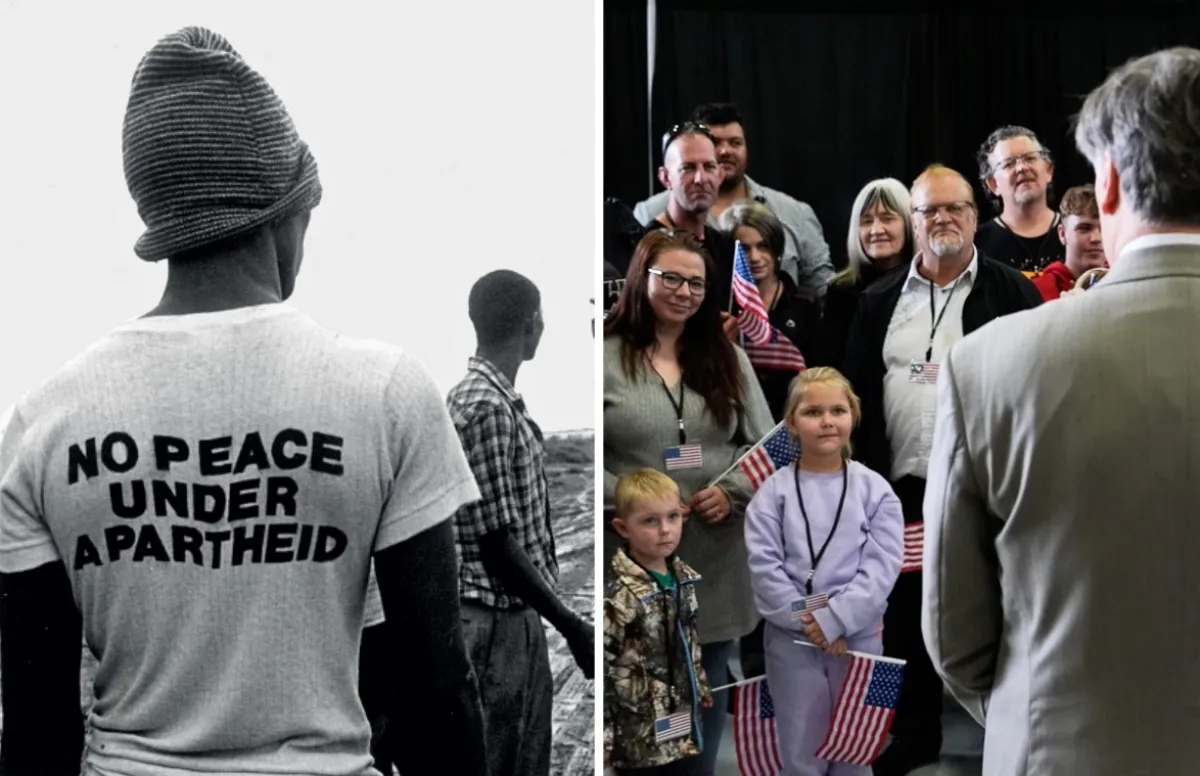
6 instances when South African refugees sought asylum overseas
Prior to Trump’s 49 Afrikaners, South African refugees fled their homeland and sought asylum on six other occasions.

While the recent arrival of 49 South Africans in the US under Trump’s asylum policy draws global attention, it’s not the first time the country has produced refugees.
For decades, South Africans fleeing apartheid-era oppression and political persecution sought safety abroad – a stark reminder that the nation has long been both a place of exile and exodus.
The first wave of South African refugees came about due to apartheid policies of 1948 that steadily increased institutionalised racial segregation. However, a turning point was the Sharpeville Massacre of 1960, in which 69 peaceful protesters were killed by police. Black South Africans and white anti-apartheid sympathisers truly feared for their lives …
1. APARTHEID SOUTH AFRICAN REFUGEES
Records show that between 1960 and 1990, around 40,000 South Africans sought political asylum, mostly black refugees escaping racial persecution. They found refuge in neighboring countries like Botswana, Lesotho, Swaziland, and Zimbabwe.
Tanzania and Zambia emerged as a significant destination for South African refugees in this 30-year period. Tanzanian President Julius Nyerere established dedicated settlements and provided educational opportunities. Likewise, thousands of African National Congress (ANC) members, and members of other liberation movements, setup operational bases in Zambia.
2. ANTI-APARTHEID REFUGEES
On the other end of the spectrum, the United Kingdom accepted an estimated 15,000 South African refugees over the same three-decade period. This group included political exiles, activists, journalists, and academics who faced imprisonment for their anti-apartheid views.
Similarly, Sweden distinguished itself by welcoming as many as 3 000 South African refugees during the 1970s and 1980s. In turn, the Swedes provided comprehensive support for asylum seekers. This included language training, housing assistance, and educational scholarships.
3. EXILES TO AMERICA
Concurrently, the United States accepted approximately 6 000 South African refugees during apartheid. However, while asylum seekers cited political persecution based on opposition to racial segregation, this occurred primarily through specialised academic scholarships.
4. POST-APARTHEID MOVEMENT
Following the dismantling of apartheid in the 1990s, the nature of South African refugees shifted dramatically. Many whites feared returning ANC exiles from Africa, now in power, would exact violent vengeance. As such, apartheid sympathisers left the country citing economic instability and rising crime rates.
5. AUSTRALIAN AFFAIR
As such, it’s believed as many as 3 000 South Africans sought a new life in Australia after the end of Apartheid. Leading to South African strongholds in the likes of Perth and other cities. However, the Australian government did not process these applications as refugees. Instead, it followed standard immigration channels but with higher scrutiny.
6. FARM ATTACKS
Then, in 2018, the Canadian government made headlines by accepting approximately 50 South African refugees. These were 12 farming families who claimed persecution based on targeted farm attacks in their homeland. This controversial decision blindsided the South African government and had officials decrying that such attacks occurred or constituted persecution.
